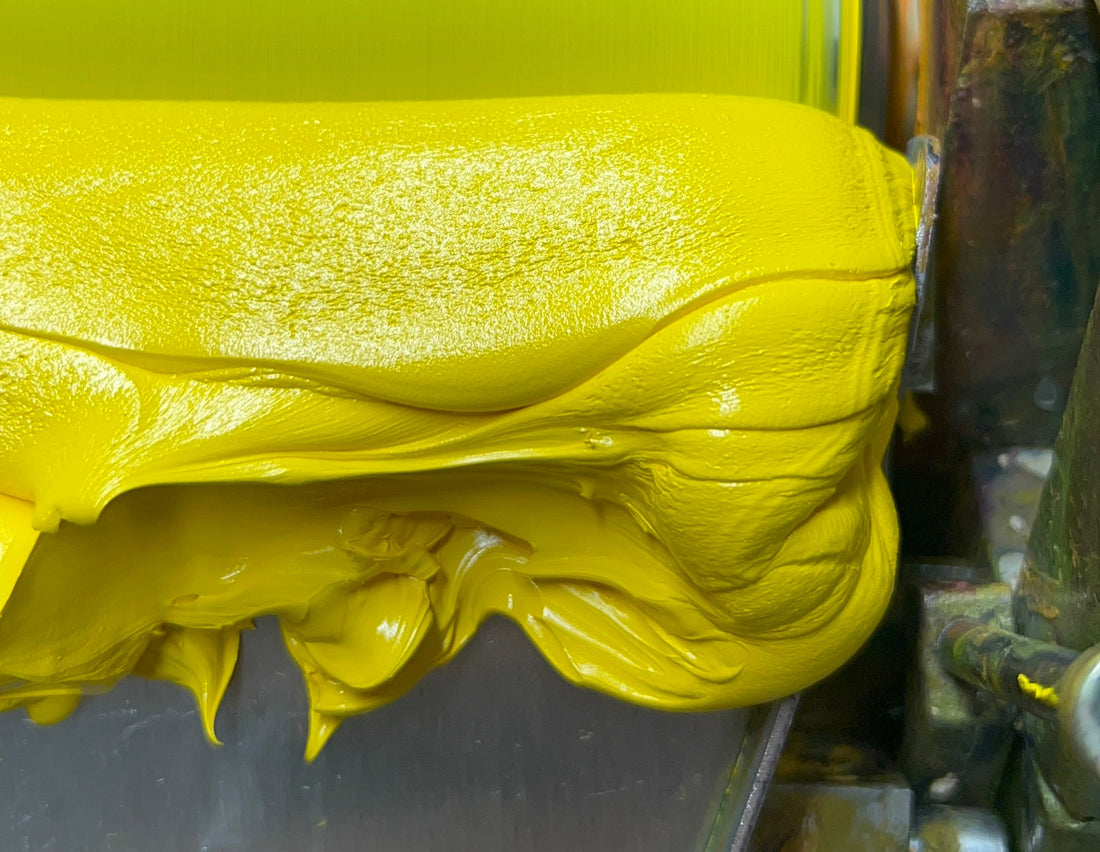
Milling Oil Paints
Lately we've been posting more pictures and videos of paints on the mill on our social media accounts. Since then we've been getting a few questions about the mill so we thought we'd share a little bit about the milling process.
Artists have been using oil paints for centuries to create beautiful, timeless works of art. Traditionally oil paints were made by hand, a process that involves grinding pigments with a binder on a flat surface using a muller, which is a hand-held tool that consists of a cylindrical stone or glass base and a handle.
At Gapka we only use the muller when we are experimenting with new a pigment in order to get a feel for its properties. As you may have seen in the pics/vids of on our social media pages, we use a three-roll mill in the manufacture of all our paints. The process of making paint involves a variety of techniques and tools, but the three-roll mill is definitely the most important. Without the mill we would never be able to achieve the creamy, smooth consistency in our oil paints or the right texture for our watercolors.
A three roll mill is used to mix and disperse the pigment particles in the vehicle (linseed oil for oil paints and our own proprietary blend for watercolors). The pigment particles are typically very fine and are not easily dispersed in the vehicle. By passing mixture through the rollers of a three roll mill, the pigment particles are broken down into smaller particles and dispersed evenly throughout the vehicle. This results in a smooth, consistent paint that is easy to work with and produces high-quality results.
There are several reasons why a three roll mill is essential for making artists’ oil paints:
- Consistency: A three roll mill ensures that the pigment particles are evenly dispersed throughout the oil medium, resulting in a consistent paint that produces high-quality results.
- Fineness: A three roll mill breaks down the pigment particles into smaller particles, resulting in a finer paint that is smoother and easier to work with.
- Color Strength: A three roll mill allows for a high level of pigment loading, resulting in a paint with strong color strength and intensity.
- Stability: A three roll mill produces a stable, homogeneous paint that is less likely to separate or settle over time.
Each of our colors are milled between 2-5 times, depending on the pigment, to ensure the highest quality end product. Manufacturing in small batches allows us to carefully check the quality and consistency of our paints as they are being made.
